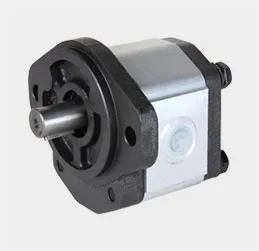sand casting foundry
Sand Casting Foundry An Essential Process in Metal Fabrication
Sand casting, a cornerstone of metal fabrication, is one of the oldest and most versatile casting processes used in modern manufacturing. This technique involves creating a mold from a mixture of sand, clay, and water, which is then utilized to pour molten metal, shaping it into intricate designs and components. With its numerous advantages, sand casting remains a popular choice for creating both small and large production runs across various industries, including automotive, aerospace, and art.
The Sand Casting Process
The sand casting process begins with the creation of a pattern. This pattern is usually made from wood, plastic, or metal and serves as a replica of the final product. The pattern is then placed in a mold box, and sand is packed around it to create a mold cavity. In traditional sand casting, the sand is mixed with clay and water, allowing it to hold its shape while being compacted firmly around the pattern. Once the mold is formed, the pattern is removed, leaving a hollow space that resembles the desired final product.
After assembling the two halves of the mold, molten metal—typically aluminum, cast iron, or steel—is poured into the cavity. The metal fills the voids and, upon cooling, solidifies into the desired shape. Finally, the foundry workers break apart the sand mold to retrieve the casting, which may require additional finishing processes such as grinding, machining, or coating to meet specifications.
Advantages of Sand Casting
One of the primary advantages of sand casting is its versatility. The process can accommodate a wide range of sizes and shapes, from small intricate parts to large components weighing several tons. Additionally, sand casting is compatible with various metals, making it suitable for diverse applications.
sand casting foundry

Another significant benefit is cost-effectiveness. The materials used in sand casting, particularly sand itself, are inexpensive and readily available. This allows manufacturers to produce castings at a lower cost compared to other methods such as die casting or investment casting, especially for low to medium production volumes. Moreover, the sand molds can be reused multiple times, minimizing waste and further driving down costs.
The process is also notable for its ability to produce complex geometries. Sand casting allows for internal cavities and intricate designs that might be challenging or impossible to achieve with other manufacturing methods. This feature makes it invaluable for industries that require precision components, such as aerospace engineering, where safety and accuracy are paramount.
Environmental Considerations
As with many manufacturing processes, the environmental impact of sand casting is an essential consideration. While the primary material, sand, is abundant, concerns arise regarding the disposal of spent sand and the emissions generated during the melting of metals. However, advancements in technology have led to more eco-friendly practices in foundries, such as improving dust collection systems and recycling spent sand.
Future of Sand Casting
The future of sand casting looks promising, with ongoing innovations aimed at enhancing efficiency and reducing environmental impact. The introduction of automation and computer-controlled systems has improved precision and reduced labor costs. Moreover, research into new binders and additives for sand mixtures is paving the way for higher-quality molds with better durability and thermal resistance.
In conclusion, sand casting remains a vital and adaptable process in the world of metal fabrication. Its ability to produce complex parts at a low cost, combined with its versatility and compatibility with various metals, ensures its continued relevance in industries worldwide. As technology advances and environmental considerations become more pressing, the sand casting foundry will likely evolve, integrating sustainable practices while maintaining its fundamental characteristics that have stood the test of time.
-
Precision Sheet Metal Stamping Manufacturer | Fast & ReliableNewsAug.01,2025
-
OEM Sand Cast Pump Valve Fittings - Baoding Hairun Machinery And Equipment Trading Co., Ltd.NewsAug.01,2025
-
Custom OEM Impellers | High Efficiency & PrecisionNewsAug.01,2025
-
OEM Sand Cast Pump Valve Fittings - Baoding Hairun Machinery | Customization, Quality AssuranceNewsAug.01,2025
-
OEM Sand Cast Pump Valve Fittings - Baoding Hairun Machinery And Equipment Trading Co., Ltd.NewsAug.01,2025
-
OEM Sand Cast Pump Valve Fittings - Baoding Hairun Machinery And Equipment Trading Co., Ltd.NewsJul.31,2025















